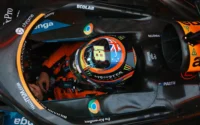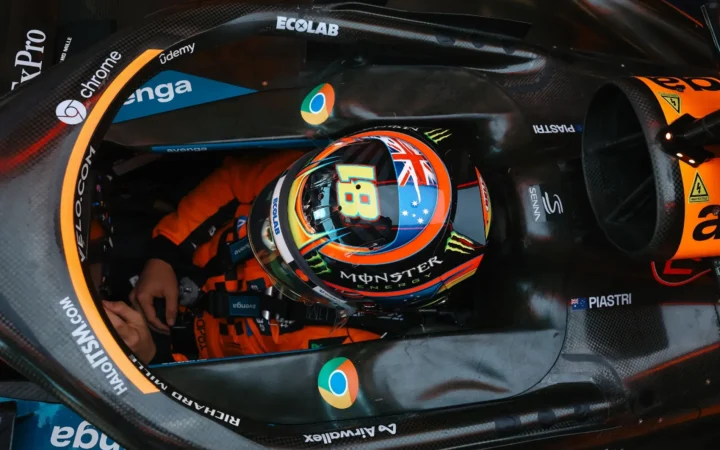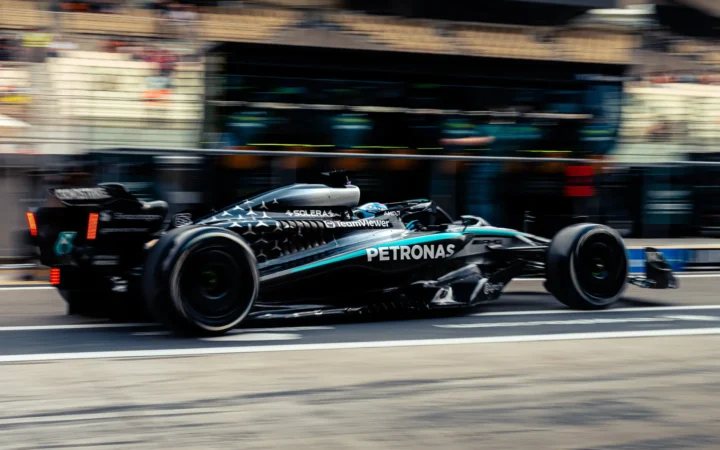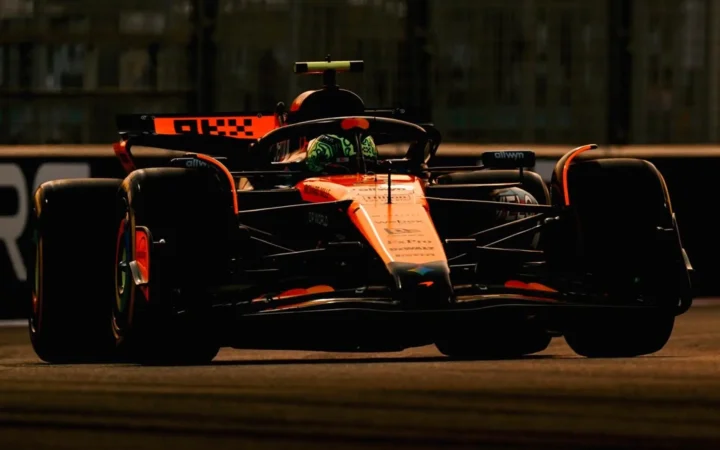In a sport where milliseconds separate the winners from heartbreak, and 24 races are crammed into a single season, Formula 1 rarely has time to pause. But every so often, something happens that makes the entire F1 family stop and reflect. One such moment came in 2014, when the world saw the devastating crash of Jules Bianchi at Suzuka during the 2014 Japanese Grand Prix. In the wake of his death nine months later, a rare gesture of permanence was made — the number 17, Bianchi raced with for Marussia, was retired from Formula 1, forever.
What To Know?
- Jules Bianchi’s number 17 was permanently retired after his tragic 2014 crash and death in 2015.
- His death led to major F1 safety reforms, including the Virtual Safety Car and the halo device.
- Number 17 is the only officially retired F1 number; others like 0 are restricted by rule.
Who Was Jules Bianchi?
Jules Bianchi was born into racing, part of a motorsport family that included his grandfather, Mauro and great-uncle Lucien (a former F1 driver). Jules carried the weight of legacy with a calm, focused intensity. But make no mistake—he wasn’t riding on reputation. From his early days in karting, it was clear Bianchi had the kind of raw, natural ability that turns heads.
By his late teens, Bianchi was securing championships and after clinching the French Formula Renault 2.0 title in 2007, he followed it up with a dominant win at the Masters of Formula 3 in 2008 and a championship crown in the Formula 3 Euro Series in 2009. Ferrari saw what everyone else did: future world champion material. They signed him as the first-ever member of their newly launched Driver Academy, placing him squarely on the path toward a scarlet race seat.
Two podium seasons in GP2, followed by a narrow runner-up finish in Formula Renault 3.5, confirmed his pedigree. Behind the scenes, he gained crucial F1 experience as a test driver for both Ferrari and Force India. But his moment came in 2013 when he was handed a late call-up by Marussia just before the season-opening 2013 Australian Grand Prix. Driving what was arguably the slowest car on the grid, Bianchi still managed to outpace his teammate—and later drove to ninth at the 2014 Monaco Grand Prix, scoring Marussia’s first (and only) championship points.
The fairy tale, though, came to a heartbreaking end. During the rain-soaked 2014 Japanese Grand Prix, Bianchi lost control of his car and struck a recovery vehicle in a devastating crash. He sustained severe brain injuries and, after nine months in a coma, passed away in July 2015 at just 25 years old—the first Formula One driver to die from injuries sustained during a Grand Prix since Ayrton Senna in 1994.
Jules Bianchi
F1 Debut 2013 Australian Grand Prix
Current/Last Team Marussia F1

Jules Bianchi Formula One World Championship Career
| F1 Career | 2013–2014 |
|---|---|
| Teams | Marussia |
| Entries | 34 (34 starts) |
| Championships | 0 |
| Wins | 0 |
| Podiums | 0 |
| Career points | 2 |
| Pole positions | 0 |
| Fastest laps | 0 |
| First entry | 2013 Australian Grand Prix |
| Last entry | 2014 Japanese Grand Prix |
What Did Jules Bianchi Achieve in Formula 1?
Jules Bianchi’s Formula 1 career may have been tragically short, but his impact was unforgettable. In a sport dominated by powerhouse teams and multi-million dollar budgets, Bianchi was the ultimate underdog—driving for Marussia, a team often resigned to the back row of the grid. Yet in 2014, on the unforgiving streets of Monte Carlo, he pulled off one of the most iconic midfield performances of the hybrid era.
Starting 21st on the grid at the 2014 Monaco Grand Prix, Bianchi finished ninth. For any top driver, that would be a solid result. But for Marussia, it was as if they had won the race. Those two points were the team’s first—and would ultimately be their only—World Championship points in the sport.
That single result secured Marussia a crucial ninth place in the 2014 Constructors’ Championship, unlocking vital prize money. Despite the much-needed cash and being listed for the 2015 season, the team ceased operations in November 2014. In January 2015, a potential buy-out stopped the auction of Marussia’s assets, allowing the team to exit administration in February 2015 as Manor Marussia F1 Team, thanks to new investments and the involvement of Justin King, a former CEO of Sainsbury’s. Retaining the Marussia name and adopting a British licence for the 2015 season, the team changed to Manor Racing in 2016, using Mercedes power units.
Why Was the Number 17 Retired in Formula 1?
The number 17 disappeared from Formula 1 because of the tragic events on October 5, 2014, during the 2014 Japanese Grand Prix at Suzuka, Jules Bianchi suffered a crash that would forever change the face of the sport. In the fading light and relentless rain, his Marussia aquaplaned off the track at Turn 7—right into a recovery vehicle that was assisting with an earlier accident. It was a freak scenario, the kind F1 had long feared but never truly prepared for.
The impact was catastrophic. Bianchi suffered a severe diffuse axonal brain injury, one of the most serious types of trauma the human brain can take. He was immediately transported to hospital and placed in an induced coma. For nine months, his family, fans, and the motorsport world hoped for a miracle. But on July 17, 2015, Jules Bianchi passed away at the age of 25—becoming the first Formula 1 driver to die from race-related injuries in over two decades, since Ayrton Senna died in 1994.
In the months that followed, F1 began to overhaul safety protocols, especially concerning vehicle recovery in live sessions and visibility in extreme conditions. The FIA conducted in-depth investigations and eventually introduced major safety reforms. Among them was the symbolic gesture: retiring Bianchi’s race number, 17, from the championship.
No future F1 driver can choose to race with the number 17. It stands today as a permanent tribute to a young man who inspired with his talent, and whose loss served as the catalyst for safety measures that continue to save lives even today. It directly led to the faster introduction of the halo safety device in Formula 1. While the halo was tested before Bianchi’s accident, his fatal crash amplified the push for its implementation. The tragic events surrounding his accident highlighted the need for improved cockpit protection and ultimately resulted in the halo becoming mandatory in 2018.
How Did Formula 1 Improve Safety After Bianchi’s Accident?
Jules Bianchi’s crash was a devastating reminder that Formula 1, despite decades of progress, could never afford to be complacent about safety. For 20 years, the sport had avoided a fatality during a Grand Prix weekend—until Suzuka 2014. In the aftermath, the FIA moved swiftly to examine what went wrong and how to ensure no driver would face a similar fate again. The result was a wave of new safety innovations, many of which now define the modern F1 era.
One of the most immediate changes was the introduction of the Virtual Safety Car (VSC) system. First used at the 2015 Monaco Grand Prix, the VSC allows race control to neutralise the race during unsafe conditions without deploying the physical safety car. By directing drivers to slow to a set delta time, it significantly reduces speed in dangerous areas.
The FIA also tightened rules around double yellow flags, revised protocols for recovery vehicle use, and enhanced driver equipment standards—especially helmets, which were redesigned to withstand debris impacts better. Every detail, from visibility in wet conditions to trackside crane usage, was reevaluated.
Formula One History Recommends
Perhaps the most visible—and at times controversial—innovation was the halo cockpit protection device, officially introduced in 2018. At first divisive among fans and drivers, the halo has since proven to be a life-saving breakthrough. It protected Charles Leclerc in Belgium in 2018, shielded Zhou Guanyu during his terrifying flip at Silverstone in 2022, and most famously saved Romain Grosjean from what could have been a fatal fireball crash in Bahrain in 2020.
Are There Any Other Numbers That Are Banned in Formula 1?
While Jules Bianchi’s number 17 remains the only officially retired number in F1 History, a few others carry unique stories or limitations. Notably, the number 13—long considered unlucky in motorsport—was avoided for decades. But when permanent driver numbers were introduced in 2014, Pastor Maldonado chose to break tradition and race with it, proving that superstition has little grip in the modern paddock.
Formula One History Recommends
Another number that has quietly disappeared is 0. It was once assigned to drivers when the reigning world champion was absent from the grid—most famously used by Damon Hill in the mid-1990s. However, under the current regulations, where drivers choose a fixed number for their careers, the number 0 is no longer eligible for selection.
Beyond those exceptions, the current F1 system allows drivers to pick any number between 2 and 99—as long as it’s not already in use or permanently retired. Some drivers select numbers tied to childhood karting days, family connections, or even personal superstition. But number 17 stands apart, removed not by choice, but from a lasting mark of respect for a life lost too soon.
That respect echoed powerfully in the words of Marussia team principal John Booth after Bianchi’s passing.
“Words cannot describe the enormous sadness within our team this morning, as we come to terms with losing Jules. He has left an indelible mark on all our lives, and will forever be part of everything we have achieved, and everything we will strive for going forward. Jules was a shining talent. He was destined for great things in our sport; success he so richly deserved. He was also a magnificent human being, making a lasting impression on countless people all over the world. They recognised, as did we, that at the same time as being a fiercely motivated racer, he was also an extremely warm, humble and intensely likeable person, who lit up our garage and our lives.”
“We thank Jules’ colleagues, friends, fans and everyone who has demonstrated their affection for him over these past months, which gave us great strength and helped us deal with such difficult times. Listening to and reading the many messages made us realise just how much Jules had touched the hearts and minds of so many people all over the world.”
Seen in:









